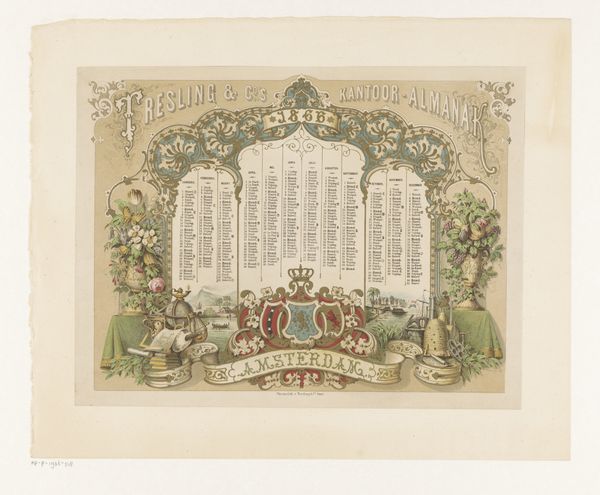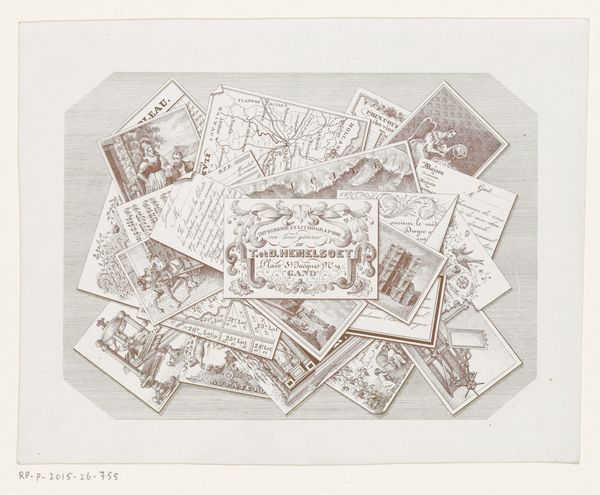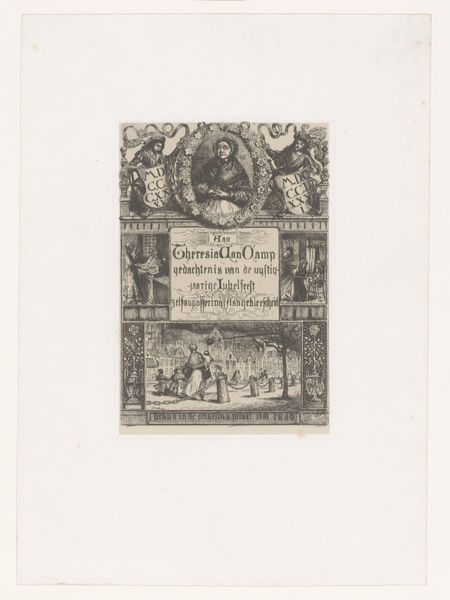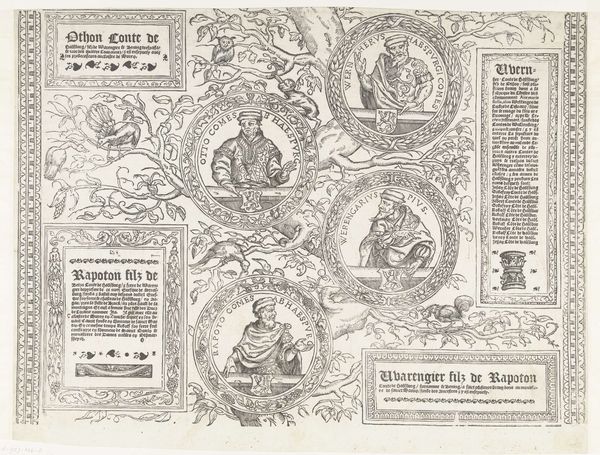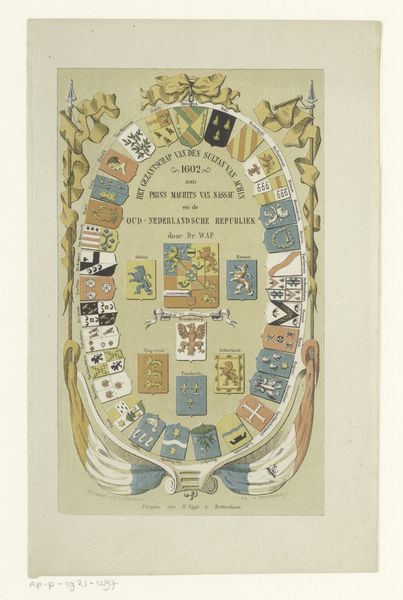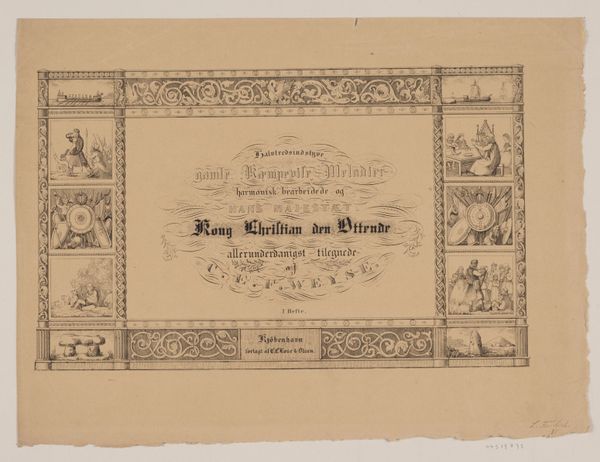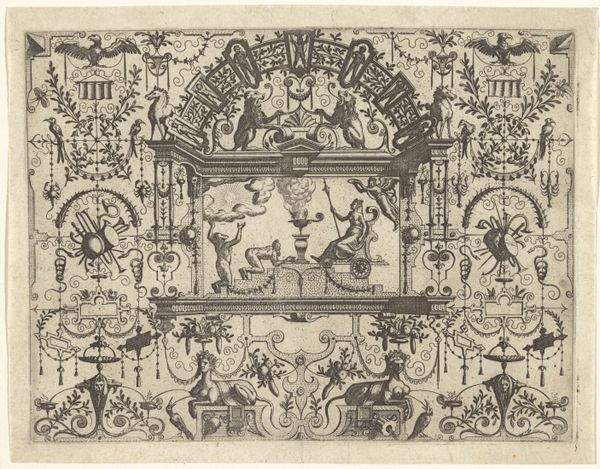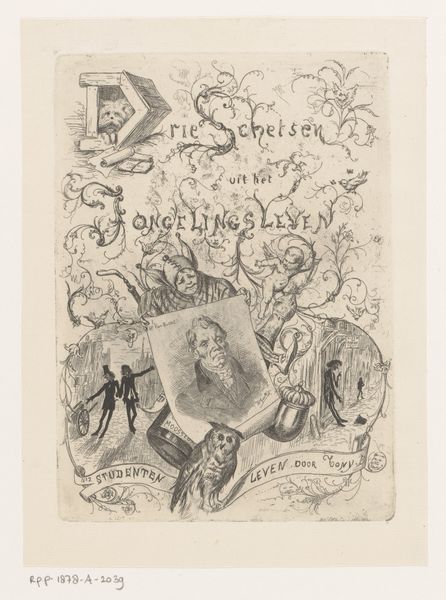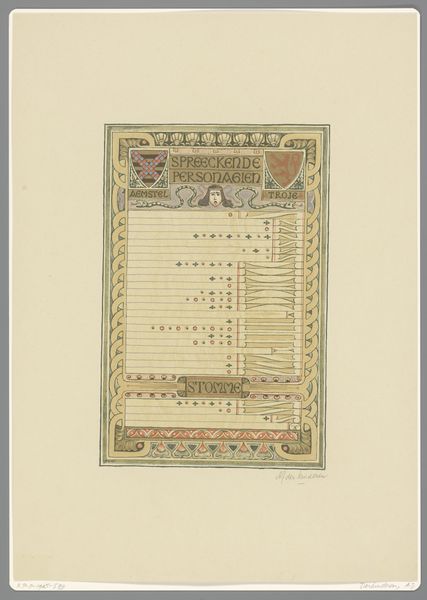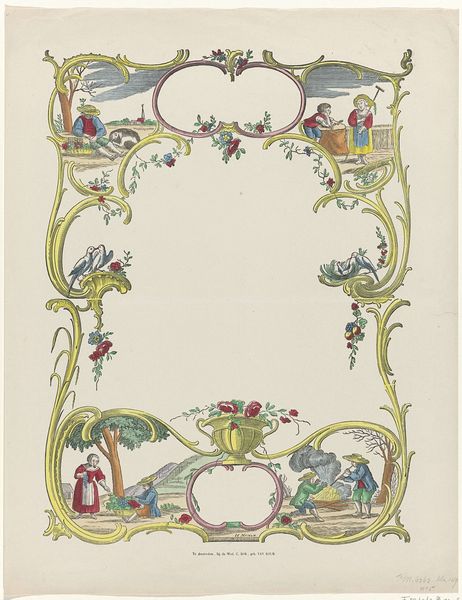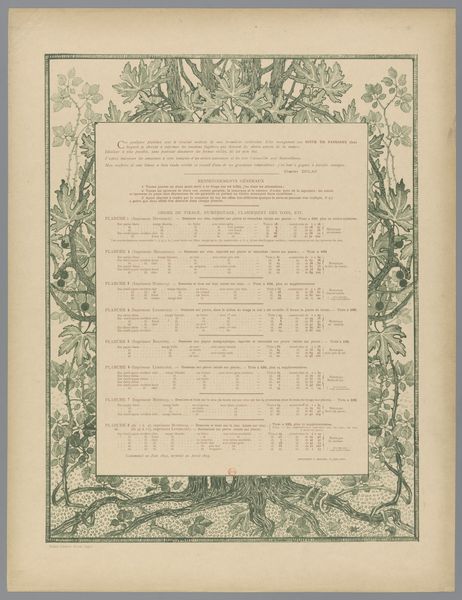
Dimensions: height 265 mm, width 360 mm, height 365 mm, width 445 mm
Copyright: Rijks Museum: Open Domain
This office calendar, made in 1869 by Johannes Henderikus Morriën, is a beautiful example of lithography, a printing process that allows for detailed images and text to be reproduced efficiently. The design is meticulously crafted, with ornate lettering and illustrations of animals, people, and landscapes surrounding the calendar itself. The lithographic process involves drawing on a flat stone or metal plate with a greasy substance, then treating the surface so that ink adheres only to the drawn areas. It is a chemical printing process that relies on the repulsion of oil and water. This allowed for the mass production of colorful and informative calendars like this one. The calendar is not just a practical tool; it’s a reflection of the growing commercial culture of the time. The precise printing and decorative elements speak to the increasing importance of visual communication and the desire for businesses to present themselves in an attractive and professional manner. Looking at this calendar, we can appreciate the skill of the lithographer and the broader social context in which it was created, reminding us that even everyday objects can be rich with cultural meaning.
Comments
No comments
Be the first to comment and join the conversation on the ultimate creative platform.
